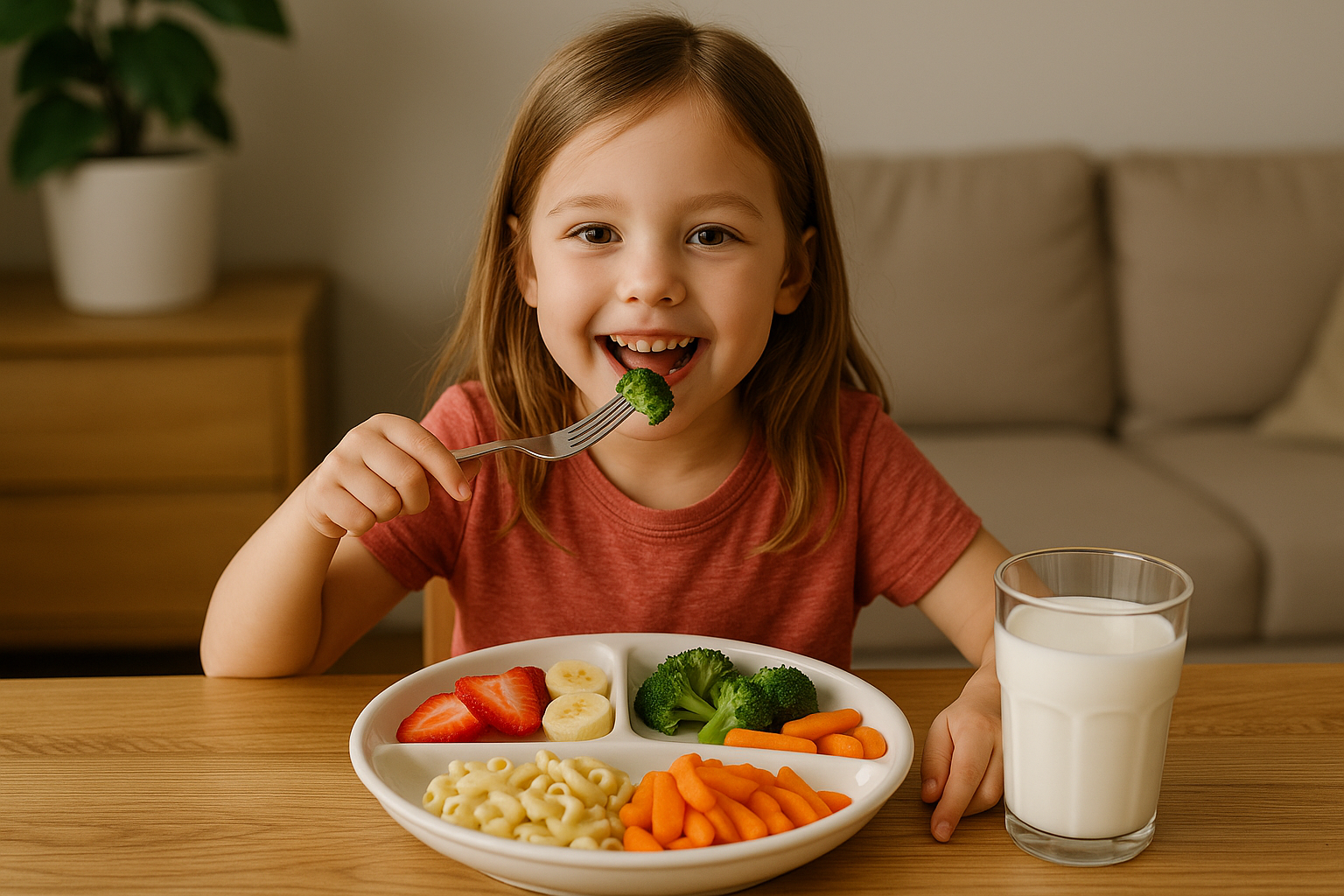Feeding your child isn’t just about full bellies—it’s about shaping lifelong habits that support health, growth, and wellbeing. But let’s be honest: getting kids to eat balanced meals isn’t always easy. Picky eating, busy schedules, and constant snack requests can turn mealtime into a struggle.
This guide will help you build healthy eating routines from the start—without stress or guilt.
Why Early Habits Matter
Children form food preferences early in life. By offering a variety of healthy foods consistently, you’re helping them:
- Develop a taste for nutritious options
- Build a strong immune system
- Maintain healthy weight and energy levels
- Create a positive relationship with food
Habits built in childhood often carry into adulthood. The effort you make now has long-term benefits.
Focus on a Balanced Plate
Healthy meals for kids don’t have to be complicated. Focus on balance, not perfection.
Each meal should aim to include:
- Vegetables and fruits (½ of the plate)
- Whole grains (¼ of the plate)
- Lean proteins (¼ of the plate)
- Healthy fats (in moderation)
Examples of balanced meals:
- Grilled chicken + brown rice + steamed carrots + avocado
- Whole grain pasta + tomato sauce + turkey meatballs + green beans
- Scrambled eggs + toast + banana + yogurt
Keep it simple, colorful, and varied.
Make Meals Predictable
Children thrive on routine, including when it comes to food. Create structure with:
- Three meals and 1–2 snacks per day
- Regular mealtimes
- Eating at the table, not in front of the TV or devices
- A calm environment with limited distractions
Predictability helps prevent constant grazing and teaches kids to eat when they’re truly hungry.
Involve Your Child in the Process
Kids are more likely to eat what they help prepare. Get them involved in:
- Washing fruits and veggies
- Stirring or mixing ingredients
- Choosing recipes for the week
- Setting the table
Even toddlers can help with small tasks. Involvement builds interest and reduces resistance.
Don’t Label Foods as “Good” or “Bad”
Avoid moralizing food. Instead, use phrases like:
- “This food helps us grow strong”
- “That’s a treat we eat sometimes”
- “Let’s add a veggie to help our body feel good”
Teaching balance instead of restriction fosters a healthier mindset and reduces guilt or obsession later in life.
Offer, But Don’t Force
You can’t control how much your child eats—but you can control what you offer. The division of responsibility model works well:
- Parents decide: what, when, and where food is offered
- Children decide: whether and how much to eat
Avoid pressure, bribing, or punishments. Trust that your child will eat what they need over time.
Keep Healthy Snacks On Hand
Instead of banning snacks, make them work in your favor by offering nutritious options:
- Sliced fruits or berries
- Cheese cubes and whole-grain crackers
- Yogurt with a drizzle of honey
- Hummus with veggie sticks
- Hard-boiled eggs
- Unsweetened applesauce
Let kids choose from a few healthy options so they feel empowered.
Limit Sugar and Processed Foods
Sugar isn’t the enemy—but too much can lead to energy crashes, mood swings, and dental issues.
Try to:
- Offer water instead of juice or soda
- Read labels—sugar hides in cereals, sauces, and snacks
- Make homemade versions of treats when possible
- Treat sweets as occasional—not rewards or bribes
Moderation is key, not total restriction.
Be a Role Model
Your child watches everything you do—including how you eat. If they see you:
- Enjoying veggies
- Drinking water
- Sitting down for meals
- Being open to new foods
They’re more likely to do the same. Lead by example.
Make Mealtimes Positive
Mealtime should be about connection, not conflict. Avoid turning the table into a battleground.
Tips for success:
- Sit together as a family when possible
- Talk about your day or ask fun questions
- Keep the atmosphere relaxed and unhurried
- Avoid shaming or criticizing food choices
A positive environment encourages curiosity and better behavior.
Accept Picky Eating as a Phase
Most kids go through picky eating stages. It’s part of development.
Here’s what to do:
- Keep offering rejected foods—sometimes it takes 10–15 tries
- Serve new foods alongside familiar favorites
- Don’t panic or make it a big issue
- Celebrate small wins—like one bite of broccoli!
Patience and consistency win in the long run.
Keep Trying New Things
Expose your child to a wide variety of foods, textures, and flavors early on. Try:
- “Color of the day” meals (all red, all green, etc.)
- Fun plating with food faces or shapes
- Taste tests or “new food Fridays”
- International dishes or spices in small doses
Early exposure reduces fear of unfamiliar foods later.
Hydration Matters, Too
Don’t forget fluids! Water is the best drink for kids.
Tips:
- Offer water with meals and snacks
- Use fun cups or straws to encourage drinking
- Avoid sugary drinks and limit juice to small amounts
Hydrated kids have better focus, mood, and digestion.
Healthy Eating Is a Journey—Not a Destination
Building healthy eating habits for your child doesn’t happen overnight. It’s a process filled with small decisions, consistency, and flexibility.
Some days your child will eat everything. Other days, almost nothing. That’s okay.
Keep showing up. Keep offering variety. Keep trusting the process.
You’re planting seeds now that will grow into lifelong wellness.
